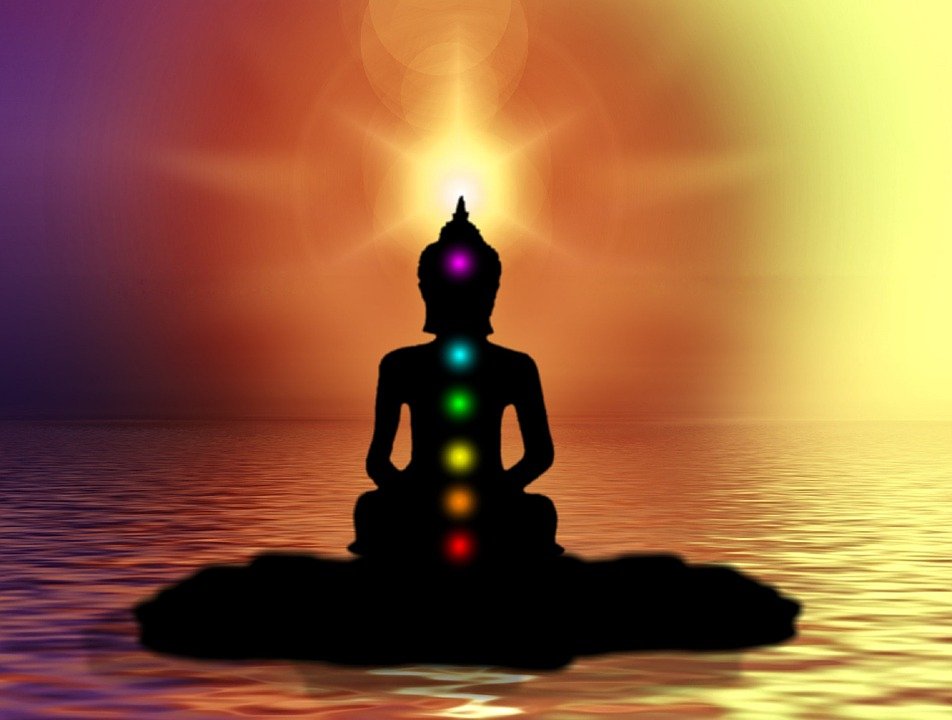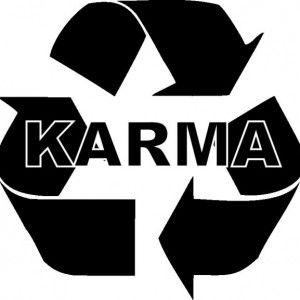What The @#$% Is A Chakra? ~ Maya Devi Georg
I keep seeing workshops taught all over the world all about chakras. Workshops to “balance,” “align,” “tune-up,” “detox,” and “clear” Chakras. Except not a single one of those workshops (or teachers) seem able to define exactly what a chakra is or does.
Descriptions like “spinning wheels of energy,” “energy centers,” “vortex,” etc., all abound. But few teachers and practitioner seem to know what any of it means.
In order to understand chakras you have to first understand the Koshas – the five sheaths (or bodies) described in the Taittreya Upanishad. From most gross to most subtle they are:
- Annamaya Kosha, the “foodstuff” sheath, the physical body.
- Pranamaya Kosha, “energy” sheath, permeates all other Koshas, it is the subtle body where the Prana Vayus (various forms of energy) reside.
- Manomaya Kosha “mind-stuff” sheath, the abode of Manas (the mind and the sensory organs).
- Vijnanamaya Kosha, “wisdom” sheath, where Vijnana (the intellect) functions to comprehend and disseminate information from the sense organs.
- Anandamaya Kosha, “bliss” sheath, where our deepest Self resides and where our current karmas are stored.
The Pranamaya Kosha permeates all other Koshas. It is where the Chakras are, along with the Vayus, and the Nadis.
A really bad (but sometimes useful) analogy of the Pranamaya Kosha is the cardiovascular system – the Vayus are the blood, the Nadis are the veins and arteries, and the Chakras are the valves that allow the Vayus to travel between Nadis. (It really is a very bad analogy, but I’m trying to keep it simple!)
That’s right – Chakras are basically valves. They exist wherever two or more Nadis cross. The only Chakras that get a lot of attention are the seven major chakras that exist along the spinal column. They are depicted as flowers – and each petal represents a Nadi.
Considering there are 72,000 Nadis in a body (according to some traditions) that means that there are a lot more Chakras than those seven. Some say there are 13 major Chakras and 21 minor, others say 49 total, some texts claim 144. Since they are not visible to the naked eye and can only be personally experienced it is difficult to know how many actually exist.
When we perform Mudras, hand gestures such as Chin Mudra (palms up with the tips of index fingers and thumbs gently touching), we are bringing Chakras together to increase circulation of certain Prana Vayus in the body. The same is done when we perform asanas.
So now that we know a little more about Chakras, can they be “unblocked,” “tuned up,” or “detoxed”? And why would we want to “purify” our Chakras in the first place? What is making them so toxic/blocked/misaligned?
I have heard some teachers claim that it is our karmas that leave behind a subtle residue that can ‘block’ Chakras. (Remember, the Pranamaya Kosha permeates all the other Koshas, and therefore carries our karmas from the Anandamaya Kosha to the other Koshas to manifest them). But consider that most yoga practitioners live charmed lives of wealth and comfort, their karmas can’t be that bad to result in catastrophic blockages.
Revisiting the terrible analogy comparing the Pranamaya Kosha to the cardiovascular system, a complete blockage in an artery or vein results in a major medical emergency (think heart attack or stroke). A completely blocked chakra would also be just as devastating, and also as unlikely in someone that is young and healthy.
As for clearing the residue away – Sure, why not. Shatkarmas can be performed, along with asana to purify the physical body, while mantra, pranayama, and meditation can be practiced to work on the subtle body.
Basically any yoga practice can help clear Chakras. There’s no way to know if these practices (or those pricey specialty workshops) really work, especially if you have not yet experienced any of the subtle energies.
The only reason to work on Chakras, or any aspect of the subtle body, is to awaken Kundalini, the primal feminine energy that sleeps at the base of our spines. When she awakens, she travels through the central Nadi to join the primal masculine energy within the skull. This isn’t a practice, it is a goal of practice. And it takes years or lifetimes to experience.
In the meantime, we can can continue to practice, meditate, and study. And if “clearing” your Chakras is part of your lineage, or makes you happy, or is important to you, keep doing it.
If you want to learn more about the Chakras, Koshas, Nadis, Vayus, and Kundalini check out Swami Sivananda’s book Kundalini. Or read Swami Sharvananda’s translation and commentary of the Taittiriya Upanishad.
(C) Copyright 2018. All rights reserved.




